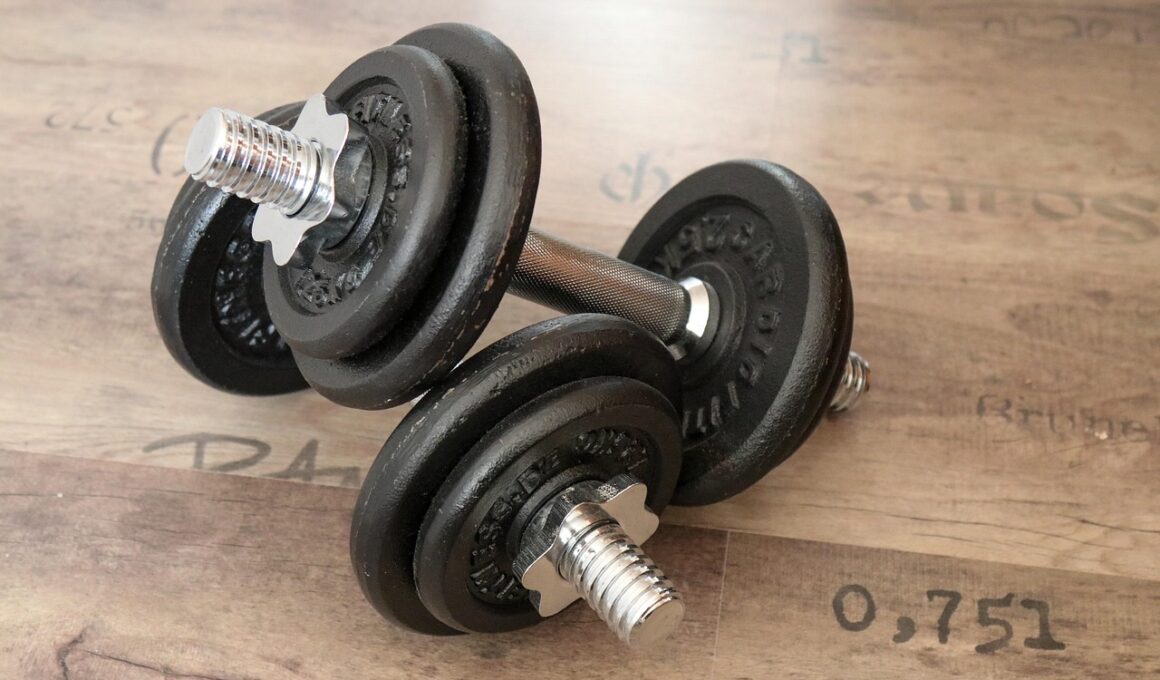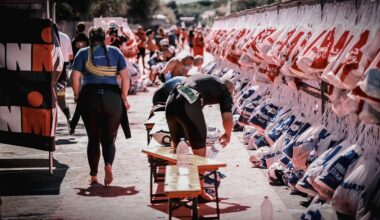Advanced Cardiovascular Conditioning for Bodybuilders
Cardiovascular conditioning is essential for bodybuilders to optimize their performance and endurance. By integrating intense cardio routines into your training regimen, you can ensure better heart health and improved circulatory efficiency. These benefits not only support aerobic capacity but also enhance recovery during subsequent weightlifting sessions. As a bodybuilder, your ultimate goal is to build muscle without sacrificing cardiovascular fitness. Incorporating advanced cardiovascular techniques is important for maintaining low body fat percentages crucial for aesthetics. Compound movements combined with cardio serves as an effective way to burn calories while increasing muscle engagement. Consider high-intensity interval training (HIIT) as a formidable training method that maximizes fat loss and spares lean muscle mass. Alongside traditional forms of cardio, such as steady-state running or cycling, HIIT alternates between all-out bursts and brief recovery phases. This method promotes an increase in metabolic rate long after the workout session has ended. Understanding the balance between cardio and weight training and utilizing varied cardiovascular approaches enables serious bodybuilders to realize their full potential while enhancing overall body composition.
Benefits of Cardiovascular Training
Engaging in advanced cardiovascular conditioning yields numerous benefits for bodybuilders, particularly in the context of recovery and fitness. Effective cardio can facilitate quicker recovery, enabling you to return to strength training sessions with minimal delay. Enhanced blood flow enhances the delivery of nutrients to muscle tissues, promoting muscle repair and growth. By elevating your heart rate, cardio workouts also stimulate hormone production, including growth hormone and testosterone, essential for muscle hypertrophy. Furthermore, regular cardiovascular activity aids in improving your VO2 max, making workouts more efficient and sustainable. By developing this key metric, bodybuilders can sustain higher intensities during weight lifting, contributing to improving overall performance. Over time, this conditioning can lead to a greater caloric deficit, supporting lean muscle gain alongside fat loss. To achieve these benefits, you should consider a diversified approach that includes longer steady-state runs, sprints, and recovery-based cardio sessions. Such a varied regimen can keep your training engaging, breaking monotony while enhancing cardiovascular fitness. Ultimately, the right combination of strength and cardiovascular training leads to strong, functional physiques that excel in performance for bodybuilders.
Depending on your fitness goals, there are various advanced cardio techniques you can implement into your routine. One such method is adding plyometric exercises paired with cardio drills. This combination improves muscle power while providing cardiovascular benefits through intense bursts of activity. For example, consider performing box jumps or burpees alongside a sprinting session. Unlike traditional cardio routines that may become tedious over time, plyometric exercises increase intensity and strength, promoting efficient calorie burning. You can increase metabolic response by incorporating resistance to your cardio training, such as using weighted vests or resistance bands. This method not only challenges the cardiovascular system but also ensures engagement of various muscle groups, enhancing overall fitness. Additionally, incorporating circuit training into your routine can exponentially increase the heart rate, providing both cardio and strength components. Circuit workouts alternate short bursts of intense activity with brief rests, optimizing time management and effectiveness. These advanced techniques promote fat loss while preserving muscle mass, a crucial aspect for any bodybuilder aiming for an impressive physique among peers.
Integrating Cardio with Strength Training
To maximize your bodybuilding routine, it’s essential to strike a balance between cardiovascular conditioning and strength training. The combination of these training modalities can optimize muscle gain while ensuring effective fat loss without compromising energy levels. One effective approach involves implementing cardio sessions on separate days from your strength training or at different times during the day. For example, if you perform strength training in the morning, consider scheduling cardio for the evening. Alternatively, you may benefit from an integrated method on your training days, utilizing cardio as a warm-up or a finisher. Preceding strength workouts with moderate cardio can increase blood flow to the muscles, enhancing performance and activating muscle fibers. Alternatively, following a strength workout with a short, intense cardio session can amplify calorie expenditure. It’s important to monitor your body’s response while adapting this strategy continuously. You’ll need to ensure that your primary goal of muscle hypertrophy remains un hindered. Fine-tuning your cardio efforts in line with your training schedule enhances results, with increased muscle growth, performance, and overall fitness.
Also, bodybuilders must remain conscious of their nutrition while integrating advanced cardiovascular workouts into their fitness plans. Proper nutrition fuels your body during intense cardio sessions, ensuring energy levels remain optimal to support both cardio and weight training. A well-structured pre- and post-workout meal can significantly enhance performance and recovery. Consuming a balanced combination of both carbohydrates and protein 1-2 hours prior to engaging in cardio will provide necessary fuel. Similarly, post-workout nutrition is equally vital. Focus on nutrient-dense foods like lean proteins, whole grains, and healthy fats to support recovery efforts. Hydration also plays a crucial role and should never be overlooked. Proper hydration aids overall performance, recovery, and focuses during workouts. A well-rounded hydration strategy will involve evaluating personal needs based on workout intensity and duration. Furthermore, consider incorporating electrolyte drinks to replenish lost nutrients after intense cardio sessions. With thoughtful attention to these dietary elements, bodybuilders will be able to harness the full benefits of cardiovascular conditioning while simultaneously achieving impressive physique transformations.
Tracking Your Progress
When implementing advanced cardiovascular conditioning, tracking your progress serves as a crucial method for optimization and enhancement. Maintaining a workout journal or utilizing fitness tracking applications can keep you accountable and facilitate improvement over time. Documenting your cardio sessions, duration, intensity levels, and recovery times will allow you to identify what works best for you. Furthermore, measuring heart rate responses during different training modalities can provide insights into cardiovascular efficiency, helping you adjust intensity for future workouts. Employing wearable technology such as heart rate monitors adds an additional layer by providing real-time feedback during your sessions. By examining trends over time, you can determine whether to increase frequency, adjust duration, or explore new techniques to achieve progress. Additionally, consider assessing body composition regularly. By analyzing body fat percentage alongside muscle mass, you can measure the effectiveness of your cardiovascular conditioning efforts. These assessments gauge both physical performance and aesthetic changes important in bodybuilding. Regularly reviewing these metrics keeps your training dynamic, preventing plateaus while ensuring continued growth and improvement.
Lastly, don’t underestimate the significance of rest and recovery for maximizing the benefits of advanced cardiovascular conditioning. Adequate rest allows your body to adapt to intensive cardiovascular training, ensuring ongoing endurance gains and optimal muscle hypertrophy. Monitoring your body for signs of overtraining is vital in maintaining progress without risking injury. Incorporate rest days or lighter activity sessions into your regimen, prioritizing recovery alongside high-intensity workouts. Active recovery methods like light walking, yoga, or swimming promote blood flow without overly straining muscles. Furthermore, ensure proper sleep hygiene; prioritizing restorative sleep helps support hormonal balance and energy levels. Recognizing that training intensity may vary between different phases of your conditioning is essential, allowing your body to respond adequately to stress while not exceeding its limits. Considerations such as periodization may optimize both strength and cardiovascular performance efficiently, leading to significant enhancements in your bodybuilding journey. By balancing hard work with rest, bodybuilders will not only witness better performance but also develop resilient physiques capable of adapting to the rigorous demands of the sport.


